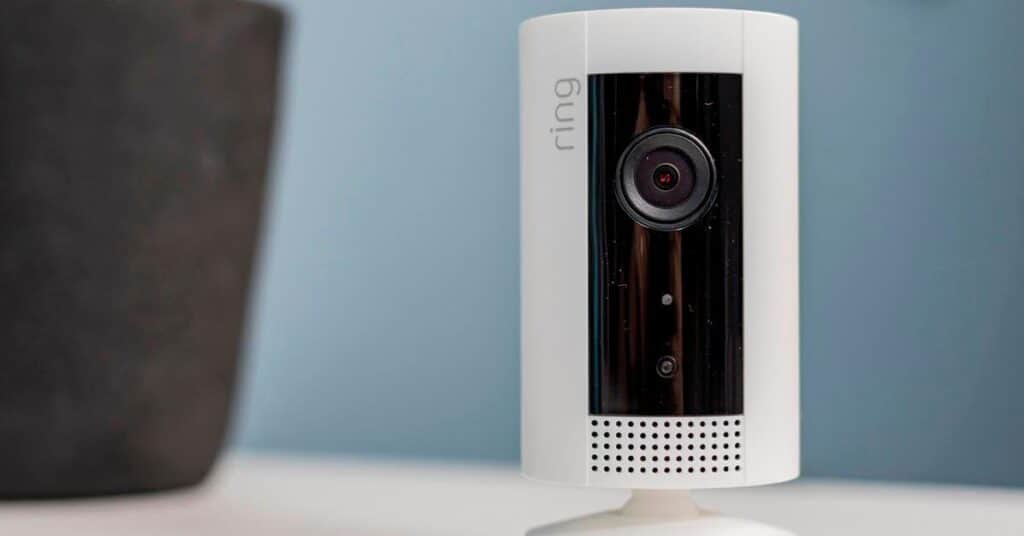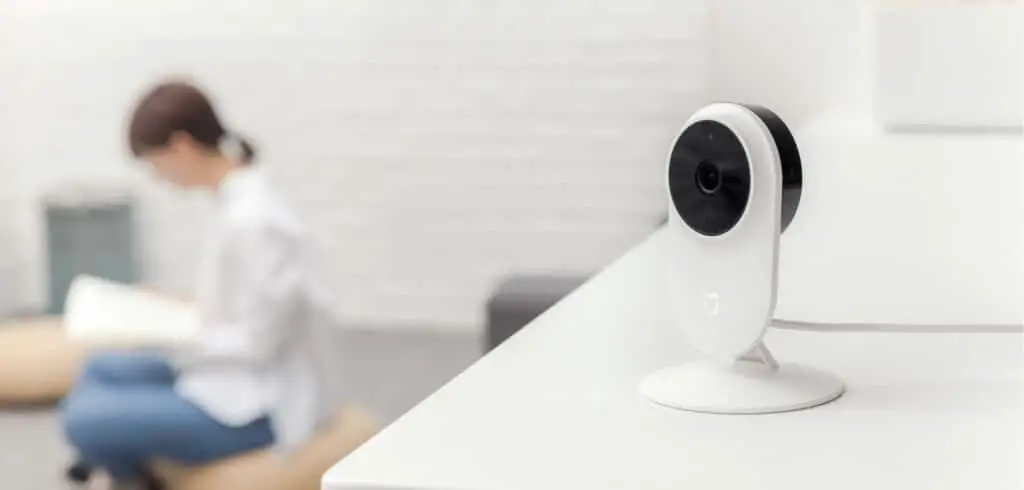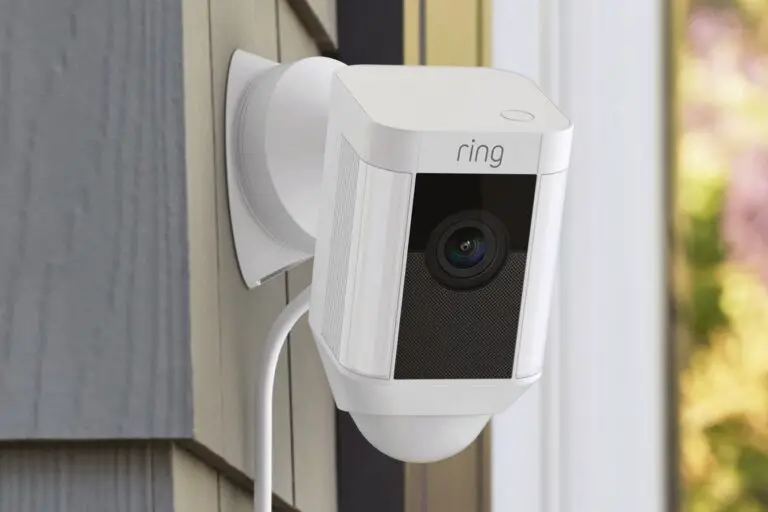Introduction
How To Hide Ring Indoor Camera: Ring indoor cameras are popular devices that provide homeowners with a sense of security and peace of mind. These compact and versatile cameras are designed to monitor the interior of your home, allowing you to keep an eye on your property remotely. While the Ring indoor camera offers valuable surveillance features, some users may have concerns about their visibility within their living spaces. Whether you’re looking to maintain a sense of privacy or enhance the aesthetics of your home, finding creative ways to hide your hidden security camera can be a worthwhile endeavor.
We will discuss both temporary and permanent hiding solutions, taking into account different room setups and user preferences. By implementing these techniques, you can ensure that your hidden security camera remains discreetly positioned without compromising its ability to capture crucial footage.
From camouflage techniques to utilizing existing decor elements, we will provide you with a range of options to hide your hidden security camera effectively. We’ll also cover the importance of considering camera angles and avoiding potential blind spots, as well as how to maintain a strong Wi-Fi connection to ensure uninterrupted surveillance.

Can you hide cameras on Ring app?
A Privacy Zone is an area within your Ring device camera’s field-of-view that you can define as off-limits. The Ring App won’t display anything in that area in Live View or record anything in the privacy zone (if you have a Ring Protect plan). You can set up to two rectangular-shaped Privacy Zones.
Strategic Placement: Consider the placement of your hidden security camera in areas that are less noticeable or blend in naturally with the environment. For example, positioning cameras on shelves, behind decor items, or in corners can help conceal them from plain view.
Camouflage Techniques: Utilize camouflage techniques to make your hidden security camera less conspicuous. You can explore options such as purchasing camera skins and covers that match your home’s decor or painting the cameras to blend in with the surrounding walls.
Use Disguises: Another option is to use disguises or housings that make the hidden security camera appear as everyday objects. For instance, you can find camera housings that resemble clocks, speakers, or even plant pots. These disguises can help your cameras blend seamlessly into the environment.
Incorporate Existing Decor: Make use of existing decor elements to hide your hidden security camera. For instance, you can position cameras behind picture frames, wall art, or curtains, allowing them to remain hidden while still capturing the desired footage.
Consider Alternative Camera Models: Ring offers various camera models, including indoor cameras, outdoor cameras, and doorbell cameras. Depending on your needs, you can opt for models that are specifically designed to be less visible or blend in with their surroundings.
How do I hide my Ring camera outside?
Camouflage with trees, leaves, and bushes
A great trick to hide outdoor security cameras is by placing them behind trees, bushes, or even within a fake hanging potted plant. The leaves can hide the camera’s body to make it less noticeable. Just make sure the lens itself is not covered with branches or leaves.
Camouflage with Natural Surroundings: One effective approach is to blend your hidden security camera with its natural surroundings. Consider the placement of the camera in areas where it can be disguised by foliage, such as bushes or trees. Make sure the camera is positioned to capture the desired view while remaining hidden from plain sight.
Utilize Outdoor Decor: Incorporate your hidden security camera into existing outdoor decor elements. For example, you can position the camera behind outdoor wall art, decorative panels, or flower pots. This allows the camera to remain hidden while maintaining an aesthetically pleasing outdoor space.
Use Disguises or Housings: Another option is to use disguises or housings specifically designed for outdoor hidden security cameras. These housings can make your Ring camera resemble common outdoor objects, such as outdoor lights, birdhouses, or weatherproof boxes. Ensure that the housing you choose does not obstruct the camera lens or audio capabilities. Find outdoor camera housings here.
Strategic Mounting Locations: Select strategic mounting locations for your hidden security camera. For instance, consider mounting it higher on the wall or under eaves to make it less noticeable. Ensure that the chosen location still provides a clear view of the desired area and does not compromise the camera’s functionality.
How to Hide Ring Indoor Camera
Ring indoor cameras provide essential surveillance, offering homeowners peace of mind. However, some users may wish to keep them discreet for privacy or aesthetic reasons. This guide explores practical and creative ways to conceal your indoor security camera. From camouflaging techniques to using decor elements like plants or artwork, we’ll provide solutions that blend the camera seamlessly with your home’s design. Plus, we’ll discuss tips on camera angles and maintaining functionality to ensure effective, hidden surveillance.
How do you install a hidden camera in a room?
Connect your new hidden camera to a computer using its USB cable and the computer’s USB port. If the cable is too short, attach it to a USB extender. Install the webcam spy software of your choice and check to see if your camera is working. Test your camera by waving your hand in front of it.
Determine the Purpose and Location: Identify the specific purpose for installing the hidden camera in the room. Assess the area you wish to monitor and determine the best location for optimal coverage. Consider factors such as lighting conditions, angles, and potential obstructions.
Choose the Right Camera: Select a hidden camera that suits your needs and fits seamlessly into the room’s environment. There are various options available, including wall clocks, smoke detectors, picture frames, or even teddy bears with built-in cameras. Ensure the camera you choose provides the necessary features such as high-resolution video, audio recording, and remote viewing capabilities. Browse hidden cameras here.
Conceal the Camera: Conceal the camera within an object or a strategic location in the room. Depending on the type of hidden camera chosen, follow the manufacturer’s instructions for concealing it effectively. If necessary, make adjustments or modifications to the object to accommodate the camera discreetly.
Power Supply: Ensure a reliable power supply for your hidden camera. Depending on the camera model, you may need to connect it to a nearby power outlet or use battery-powered options. Conceal the power cable or battery pack to maintain the hidden aspect of the camera.
Can a hidden camera be inside a wall?
The best type of camera for hiding in a wall is a small security camera that can fit in the wall cavity, has a wide-angle lens to capture a broad view, and can operate in low light conditions. Wireless cameras are often used for this purpose, as they don’t require a physical connection to a recording device.
Professional Assistance: Installing a hidden camera inside a wall can be a complex task that may require professional assistance. It involves knowledge of electrical wiring, structural integrity, and potentially cutting into the wall. Consulting with a professional can ensure proper installation and compliance with safety regulations.
Camera Selection: Choose a hidden camera that is specifically designed for wall installation. These cameras are typically small and discreet, allowing them to fit within the limited space inside the wall. Select a camera that meets your desired specifications, such as video quality, audio recording, and remote viewing capabilities.
Power Supply: Consider the power supply for the hidden camera. Depending on the camera model, you may need to connect it to an electrical outlet within the wall or utilize battery-powered options. Ensure proper wiring or battery placement to maintain the hidden aspect of the camera.
Concealing the Camera: Conceal the camera within the wall, ensuring it remains hidden from view. This may involve cutting a hole in the wall, creating a cavity to fit the camera, and then carefully concealing it with drywall or a wall plate. Take care to blend the concealment method with the surrounding wall texture and finish to minimize detection.

Where can I hide a hidden camera?
How to Hide a Camera in Plain Sight: Common Household Items
- Artificial Plants: Place the camera in a flowerpot or a vase and use leaves as a concealer.
- Curtain Rods: Small cameras placed high up are less likely to be detected.
Everyday Objects: One popular approach is to hide a camera within everyday objects. These can include items like clocks, picture frames, books, teddy bears, or even household appliances. Choose objects that are inconspicuous and blend seamlessly into the room’s decor.
Furniture and Decor: Utilize furniture and decor items to hide a camera discreetly. For example, you can place a camera inside a potted plant, behind curtains or blinds, or within a bookshelf. The camera can be positioned in a way that captures the desired area while remaining hidden.
Ceiling Fixtures: Concealing a hidden camera in ceiling fixtures can provide an advantageous vantage point and wide coverage. Consider placing a camera inside a recessed lighting fixture, smoke detector, or air vent. Ensure that the camera lens is not obstructed and blends with the fixture’s appearance.
Wall Installations: Another option is to hide a camera within wall installations. This can include wall clocks, electrical outlets, wall plates, or even behind wall art. Ensure that the camera is properly concealed and positioned for an optimal field of view.
Outdoor Spaces: If you need to monitor outdoor areas, consider hiding a camera within outdoor fixtures. This can include birdhouses, garden sculptures, outdoor lights, or even bird feeders. Ensure that the camera is weatherproof and well-concealed within the chosen object.
Is it possible to hide a camera?
Hiding a camera can be easy to do if you use a Two Way Mirror. Instead of nesting a camera into a teddy bear for a nanny cam, blend your camera into your home decor by putting it behind a mirror. This way, you are not limited to micro-sized cameras that people may or may not see.
Disguises: Cameras can be disguised as everyday objects to make them less noticeable. This includes objects like clocks, pens, USB chargers, wall outlets, smoke detectors, or even plants. Disguised cameras blend into the environment and are less likely to be detected.
Custom Housings: Another approach is to create custom housings for cameras that match the surrounding decor or objects. This involves modifying or building a specific housing to hide the camera effectively while maintaining functionality.
Camouflage: Camouflage techniques can be used to hide cameras in plain sight. For example, painting a camera to match the color of the wall or using a camera skin that blends with the environment can make it less conspicuous.
Strategic Placement: Proper camera placement is crucial for effective hiding. Consider angles and potential blind spots when determining the camera’s location. Strategic placement ensures optimal coverage while minimizing visibility.
How far can hidden cameras see?
The visual range of a security camera depends on a variety of features. Generally speaking, security cameras have a range of anywhere between 10 and 70ft during the day. Alternatively, some night-vision security cameras have a range of 100-200ft!
Lens Type: Different lens types, such as fixed or zoom lenses, can impact the viewing range of a hidden camera. Zoom lenses offer the ability to adjust the focal length, allowing for variable viewing distances. Fixed lenses, on the other hand, have a specific focal length and provide a fixed field of view.
Lighting Conditions: The level of ambient lighting in the area being monitored affects the visibility and clarity of the camera’s footage. In well-lit environments, the camera’s range may extend further, capturing clear images at a greater distance. In low-light conditions, the range may be reduced, and the camera’s footage may appear grainy or less detailed.
Field of View: The field of view (FOV) refers to the area that a camera can capture within its frame. Cameras with a wider FOV can cover a larger area, but the level of detail may decrease as the distance from the camera increases. Understanding the FOV of a hidden camera is crucial for determining its effective viewing range.
Environmental Obstructions: Environmental factors, such as physical obstructions or interference, can impact the viewing range of hidden cameras. Objects like walls, furniture, or vegetation may obstruct the camera’s view or affect the clarity of the footage. Potential obstructions when determining the effective viewing range.
Can hidden cameras record in dark?
If a camera wants to catch movement or take photos in low-light or dark rooms, it will usually use infrared (IR) light, which human eyes can’t detect. However, even if you can’t see the IR light emitted by the camera, the sensor on your smartphone camera should be able to.
Infrared (IR) Illumination: Hidden cameras equipped with IR illumination can record in the dark. IR LEDs (Light Emitting Diodes) emit infrared light that is invisible to the human eye but can be detected by the camera’s image sensor. This allows the camera to capture footage in low-light or pitch-dark conditions.
Night Vision: Many hidden cameras have built-in night vision capabilities. These cameras can switch to a dedicated night vision mode when the ambient light level is low. They utilize IR illumination to illuminate the scene and capture clear images or videos in black and white.
Infrared Cut-Filter (ICF): Some hidden cameras feature an infrared cut-filter (ICF) that helps improve image quality in both daylight and low-light conditions. The ICF blocks infrared light during the day to prevent color distortion, and then automatically switches off at night to allow the camera to capture IR light for night vision.
Lux Rating: The lux rating is a measurement of the camera’s sensitivity to light. A lower lux rating indicates better performance in low-light conditions. When considering a hidden camera for recording in the dark, choose a camera with a lower lux rating for enhanced sensitivity and improved image quality.
Effective Range: The effective range of a hidden camera’s night vision capabilities is consideration. Different cameras have varying ranges, which can range from a few feet to several tens of feet. Determine the desired coverage area and select a camera with a night vision range that suits your needs.

Conclusion
We began by emphasizing the importance of considering both temporary and permanent hiding solutions, allowing you the flexibility to adapt your hidden security camera placement as needed. From utilizing camouflage techniques to incorporating existing decor elements, such as plants or wall art, you can seamlessly integrate your Ring indoor camera into your home’s interior design.
We also highlighted the significance of camera angles and avoiding potential blind spots. By carefully positioning your hidden security camera, you can maintain a comprehensive view of your surroundings while minimizing its visibility to potential intruders. Additionally, we stressed the importance of maintaining a strong Wi-Fi connection to ensure uninterrupted surveillance performance.
While hiding your Ring indoor camera is a legitimate concern, it is crucial to strike a balance between concealing the device and ensuring that it remains functional. Be mindful of any obstructions that may interfere with the camera’s field of view or audio capabilities. Regularly test the camera’s functionality to ensure it is still capturing high-quality footage.
The goal of hiding your hidden security camera is to provide you with peace of mind and a sense of security in your home. By implementing the tips and techniques discussed in this guide, you can achieve this objective while maintaining the aesthetics of your living space.

